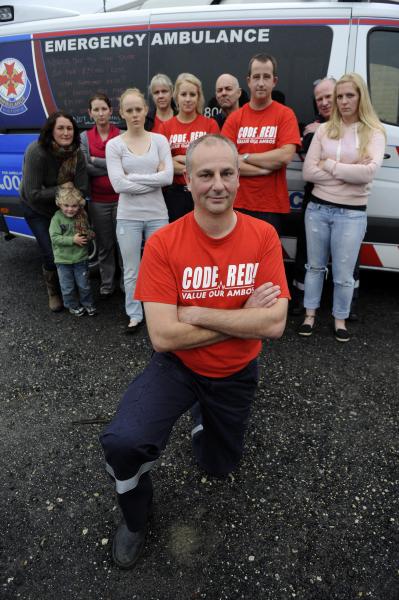
By DANIELLE GALVIN
PARAMEDICS have spoken out about “insane” boundaries which they say put lives at risk from Lang Lang to Pakenham.
The Pakenham and Grantville ambulance officers, who have spoken out as part of their ongoing industrial dispute with the State Government, have claimed residents of towns at the southern end of the shire are being left vulnerable by unnecessary bureaucratic restrictions.
They say that an out-dated boundary which divides Lang Lang and Grantville means the outlying towns are poorly resourced.
Mark Macreadie from the Pakenham Ambulance Station said the communication between rural and metropolitan dispatch systems needed to be addressed. He said paramedics in Grantville didn’t necessarily hear about emergencies in Lang Lang.
“Since the Grantville ambulance opened a couple of years ago, they are the closest ambulance to Lang Lang, being some 10-15 minutes closer than any other ambulance,” he said.
“The ambulance service refuses to change the catchment boundaries, resulting in Pakenham still being sent to emergencies in Lang Lang even though Grantville is much closer.”
But Ambulance Victoria denied the claim, saying that the closest ambulance would be dispatched.
Regional Manager Metro East Cath Anderson said the deployment of paramedics was dynamic and the most appropriate ambulance was despatched from the nearest location to any call.
“We always send the closest ambulance to the most time critical patients first,” she said.
“We utilise call information to map demand for ambulances by time of day and location to better plan our service.
“Our sophisticated system also suggests moves for ambulances to achieve the most optimal ambulance response with the resources available.”
But Mr Macreadie said the situation was a “nightmare” for residents not only in Lang Lang, but those in Pakenham who had their ambulance crew tied-up down the road.
“There are huge delays in getting an ambulance to Lang Lang,” he said.
“It takes us anywhere from 20 to 30 minutes to get to Lang Lang with lights and sirens going down Kooweerup-Pakenham Road.”
He said it meant that Lang Lang patients were sometimes left in the lurch waiting and the Pakenham community was left without an ambulance.
“This situation has left many Lang Lang patients waiting in pain for an ambulance further away to arrive while the close ambulance might be left idle,” Mr Macreadie said.
“You could fall six metres off a ladder and you could fall down and be considered a code one – it’s life and death stuff and they will send an ambulance from Dandenong before they send Grantville.”
Fellow Pakenham paramedic Ian Buckland said Lang Lang were getting the “short end of the stick.”
“I have a young niece who required a MICA transport and she is in Lang Lang – if something happens to her again what do I say to the mother – that it takes us 35 minutes to get there?” he said.
“Country areas are typically resource poor – so it is a good idea to typically keep the ambulance in their country town.
“But it doesn’t make sense in the case of my niece when you have an ambulance that has the drugs and the training that’s 10 minutes away and happy to go and they don’t even know about it.”
Grantville team manager Anthea Chester said they were happy to attend but they often didn’t know that an emergency had been called through.
Ms Anderson said the caseload continued to grow and there was evidence of an improvement to patient outcomes.
“The increase in demand for ambulance services and the time taken to transfer patients at hospitals can impact on our ability to respond to triple zero calls,” she said.
“Response times are not the only measure of a quality ambulance service and we are seeing improvements in the important measures of whether people live or die, and the quality of their life, for cardiac arrest, heart attack, stroke and head trauma patients.”






